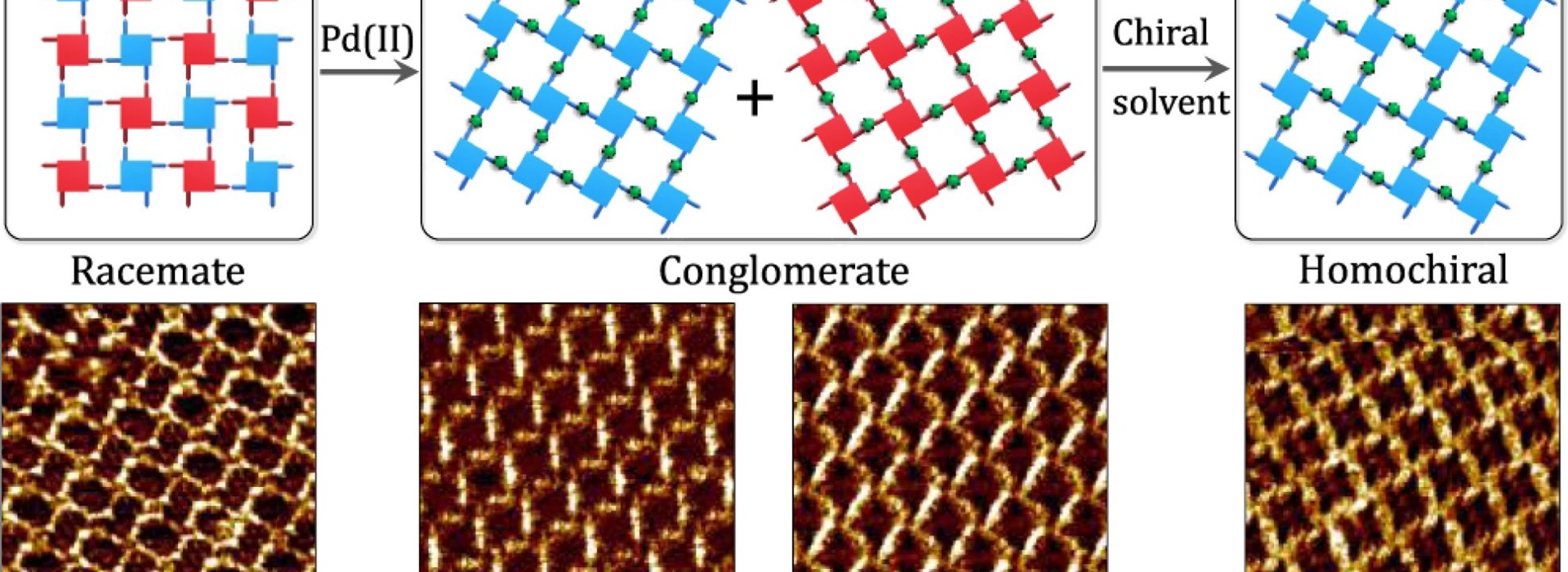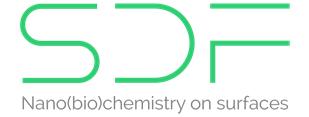Metal Ion and Guest-Mediated Spontaneous Resolution and Solvent-Induced Chiral Symmetry Breaking in Guanine-Based Metallosupramolecular Networks

Two-dimensional (2D) chirality has been actively studied in view of numerous applications of chiral surfaces such as in chiral resolutions and enantioselective catalysis. Here, we report on the expression and amplification of chirality in hybrid 2D metallosupramolecular networks formed by a nucleobase derivative. Self-assembly of a guanine derivative appended with a pyridyl node was studied at the solution-graphite interface in the presence and absence of coordinating metal ions. In the absence of coordinating metal ions, a monolayer that is representative of a racemic compound was obtained. This system underwent spontaneous resolution upon addition of a coordinating ion and led to the formation of a racemic conglomerate. The spontaneous resolution could also be achieved upon addition of a suitable guest molecule. The mirror symmetry observed in the formation of the metallosupramolecular networks could be broken via the use of an enantiopure solvent, which led to the formation of a globally homochiral surface.
Read more: J. Am. Chem. Soc., 2023, 145, 2, 1194–1205 Link to publisher
To enable comments sign up for a Disqus account and enter your Disqus shortname in the Articulate node settings.


